In the late ’90s, I was obsessed with a TV show called Junkyard Wars. The premise of the show was simple: two teams competed to build and race vehicles from junk. Ever since I’ve yearned to try something like that myself. But fate had different plans for me, and instead of being one, I am destined to write about people who transform trash into treasure. Take Kenneth, for example, a DIY enthusiast with a passion for travel. The man in his dotage built a unique teardrop trailer that’s entirely his own. While it’s not designed for racing, the little rig has racked up over 48,000 miles and is still going strong.
Measuring eight feet long and five feet wide, the DIY teardrop trailer is finished in foam with canvas sheathing. While there is no exact reason why Kenneth picked foam over aluminum or wood, I assume he wanted to travel light, and using foam in a shell is a great way to reduce weight, improve safety, and enhance comfort.
As he explains in a video tour of his creation uploaded on Playing With Sticks, it was his wife’s influence that sparked the creation. His wife Dixie wanted a mobile home that could keep up with their adventurous lifestyle, so Kenneth set out to build something different.
The idea was to DIY a teardrop trailer of their own, but not a regular trailer that’s made of wood or aluminum. Kenneth rather wanted to utilize foam and storage bins for the endeavor. The result was a camper that’s incredibly unconventional and functional.
Kenneth didn’t disclose any details regarding the DIY process or the cost it took to complete, but there are some interesting details that we were able to decipher via the video tour. A case in point, the roofing of the trailer isn’t foam or any other material but full-blown solar panels. If Kenneth is to be believed, these panels are the roof, and in case someone takes them down, the interior would be wide open. So, solar roof panels indeed cap the structure, unlike traditional off-grid trailers, where these panels come as an add-on.
As pointed out by Auto Evolution, the shell is enough to support a side awning, an integrated door, a side-mounted roof vent, and those two slideouts integrated into the shell. These slide-outs cleverly repurposed from everyday storage containers, are lightweight but secure, designed to stay put even at highway speeds. Kenneth admits the cutouts for these features might raise questions about structural integrity, but after four years and 48,000 miles of exposure to sun, rain, and wind, the camper’s resilience speaks for itself.
The interior is cramped and frankly, I didn’t expect a DIYer to offer the spaciousness levels of Nomad XL or Kube. Surprisingly though, the trailer comes accoutred with a bathroom, a rare luxury for a trailer this size, making it a standout for anyone who values comfort on the road. Kenneth didn’t skimp on the amenities either and has equipped the trailer with basic essentials from bedding to kitchen.
The kitchen is located at the rear and features all the essentials of camping. It is to be noted that the trailer’s rear doesn’t feature any convention hatch due to its foam construction. Hence Kenneth has to use a truck bed tonneau cover and some bent support rods to access the rear space. All said and done, it isn’t the fanciest of trailers you would come across on the internet but the DIY camper trailer is something worth checking.
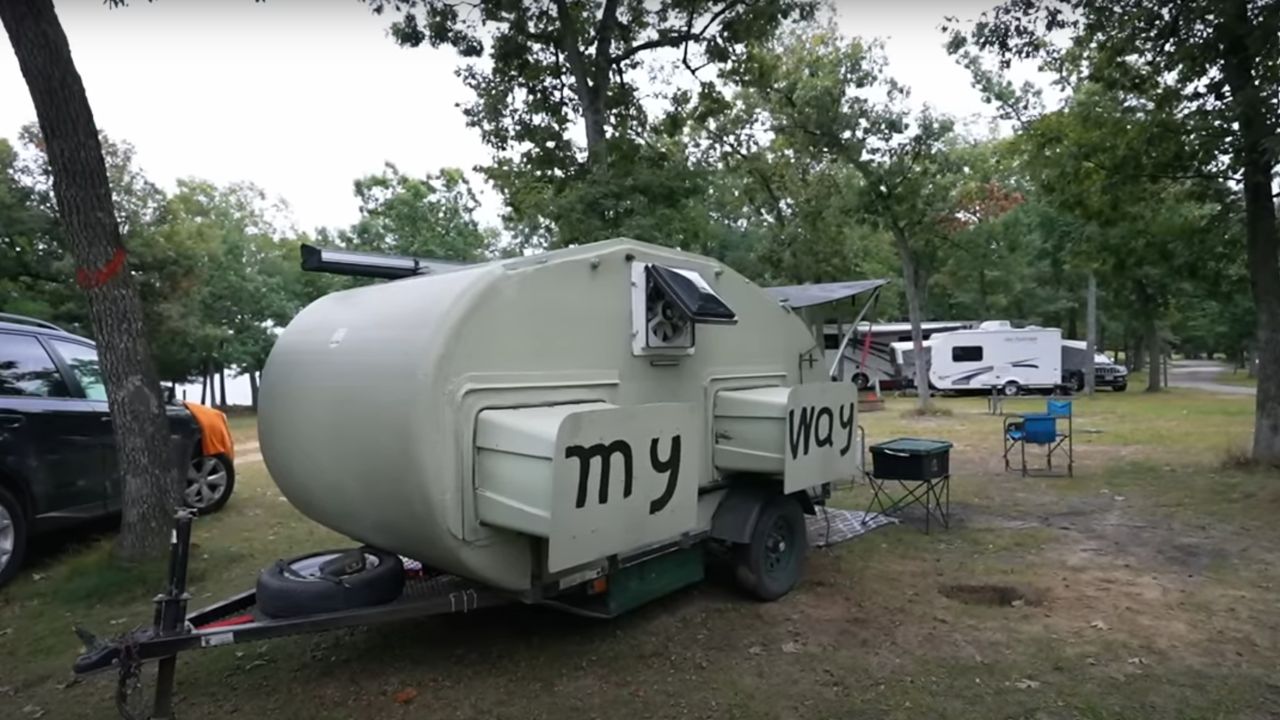
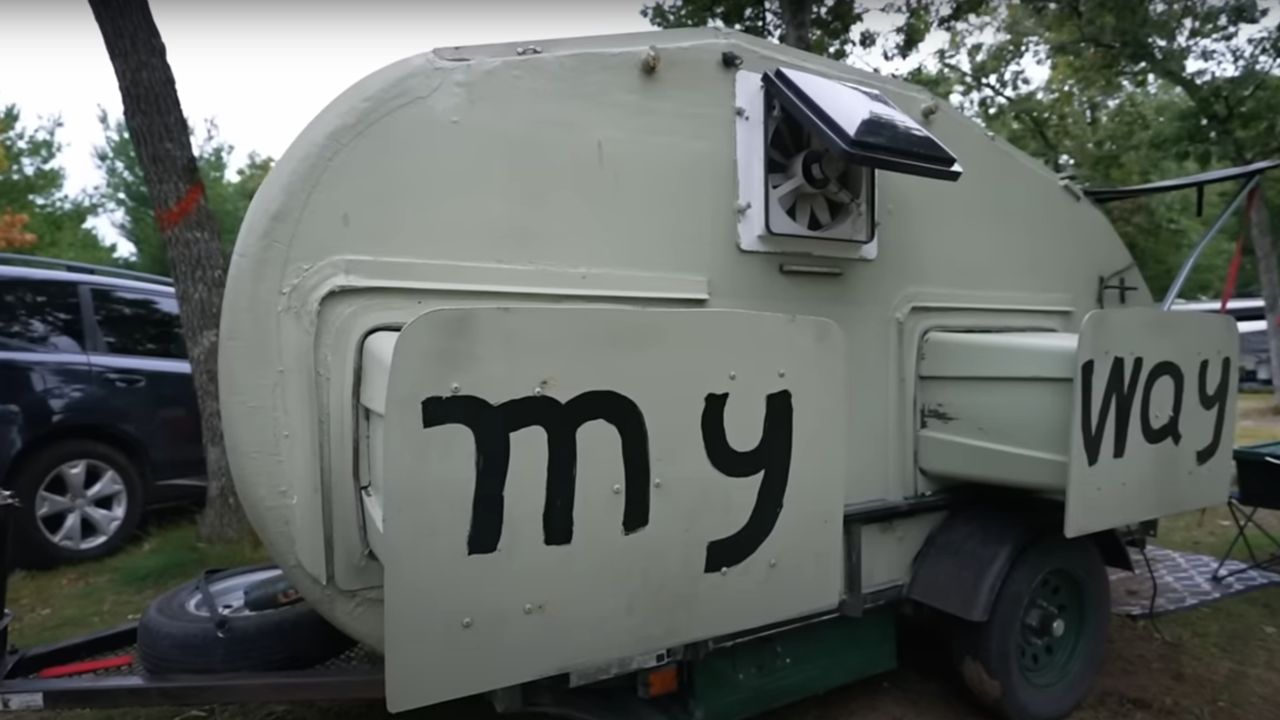
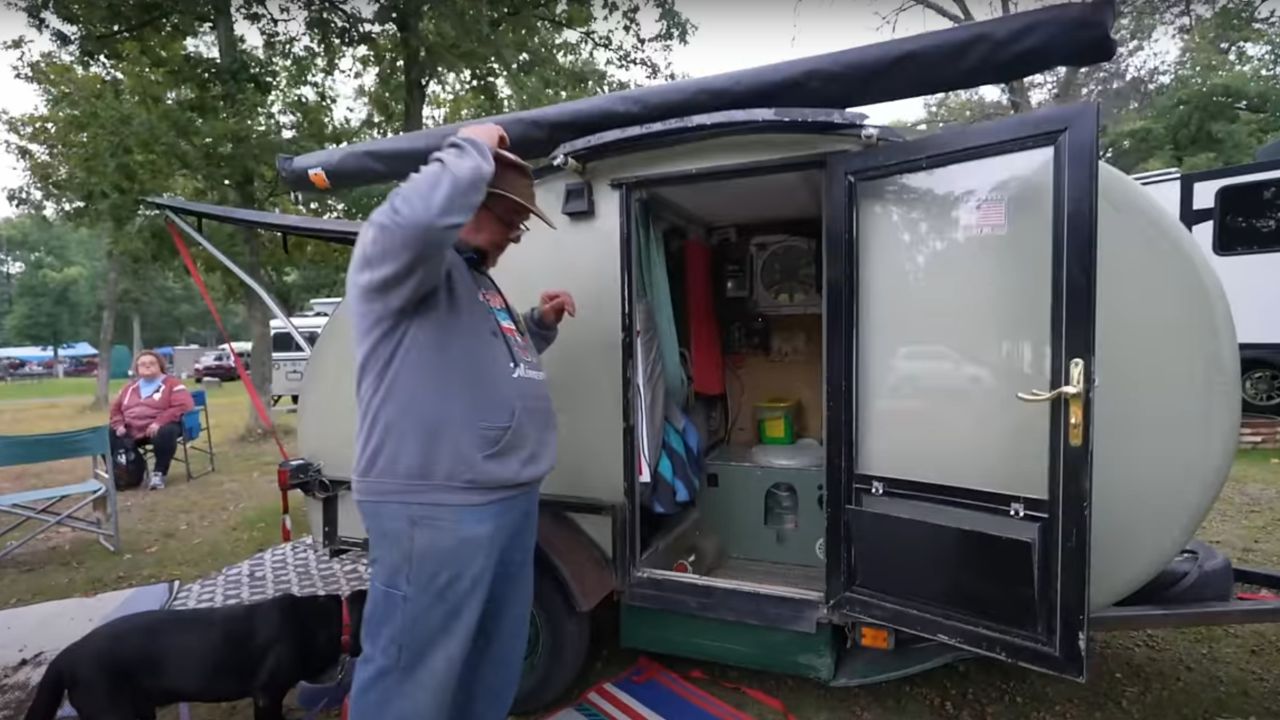
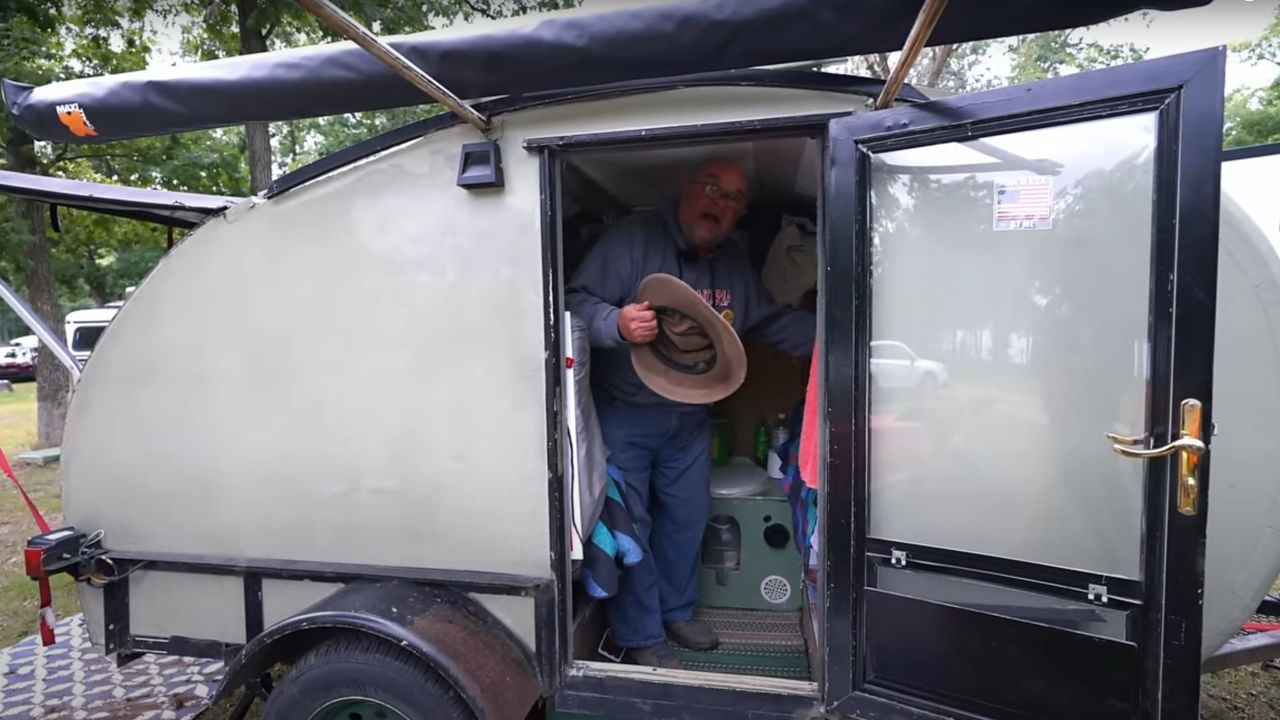
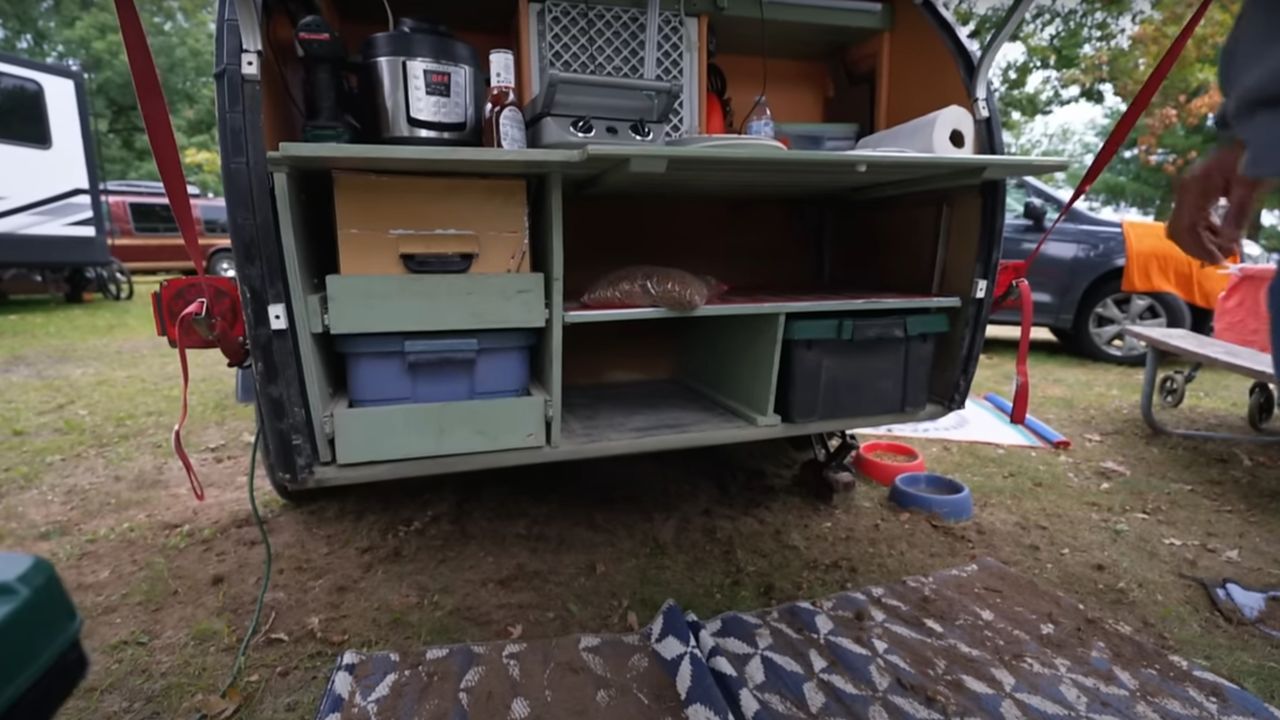
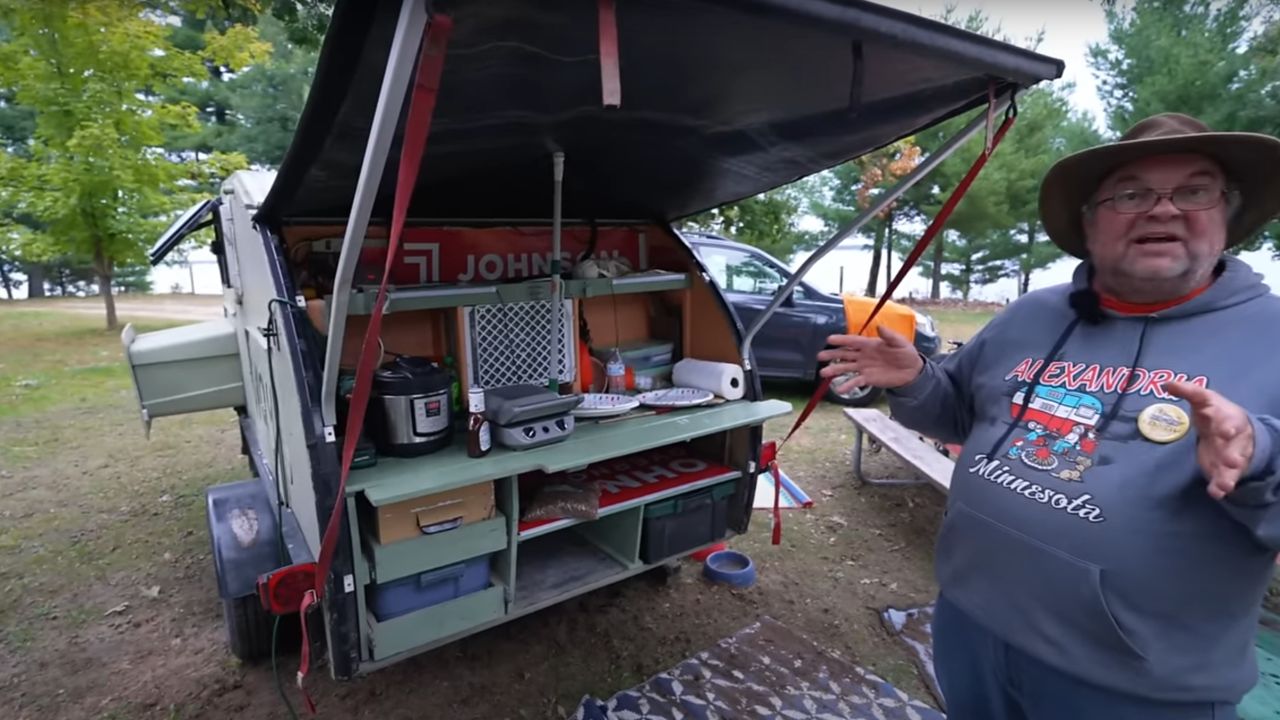
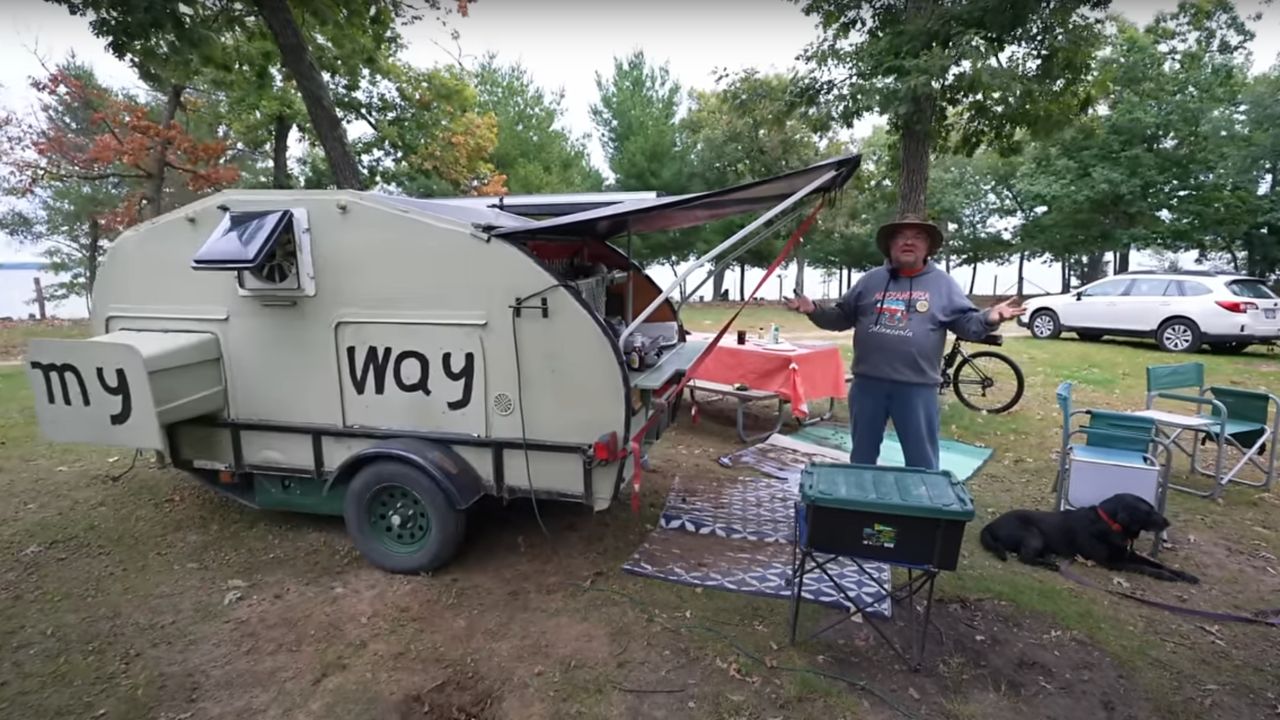
Follow Homecrux on Google News!
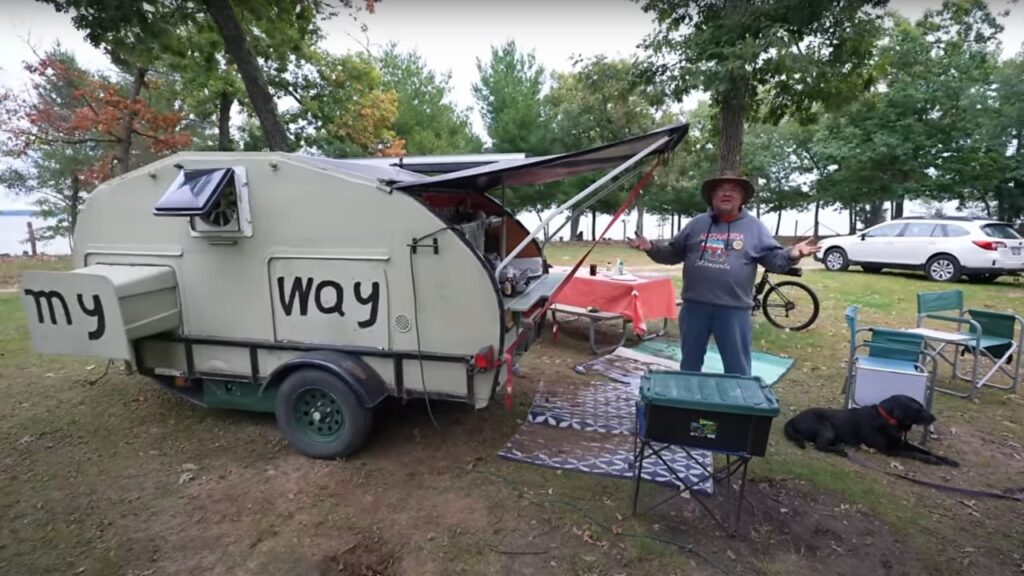



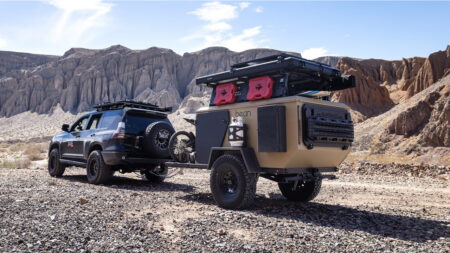
Hi, this is Drew from Playing with Sticks! Great article Atish. I love the angle you took on this.
Thank you Drew. This is an inspiring story and teaches everyone a thing or two. Appreciate you for presenting it in such a good way in the video.